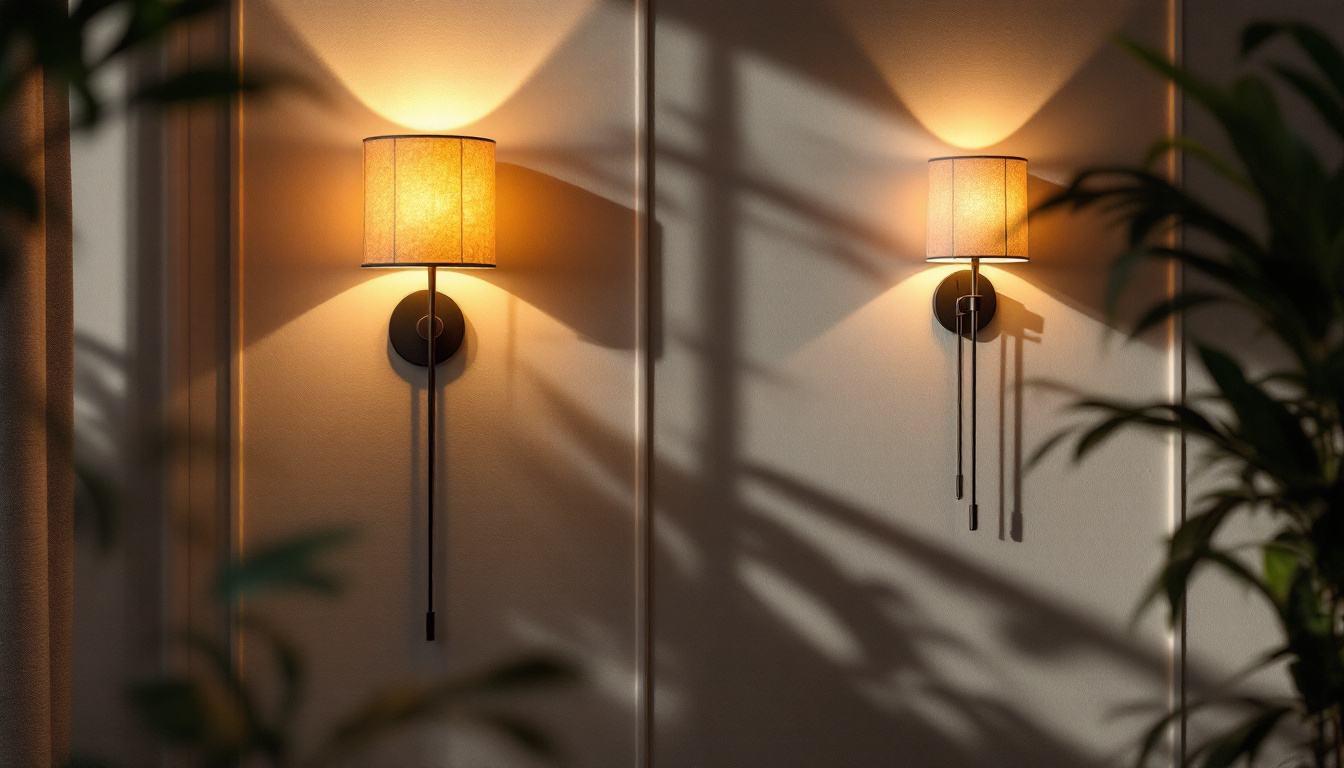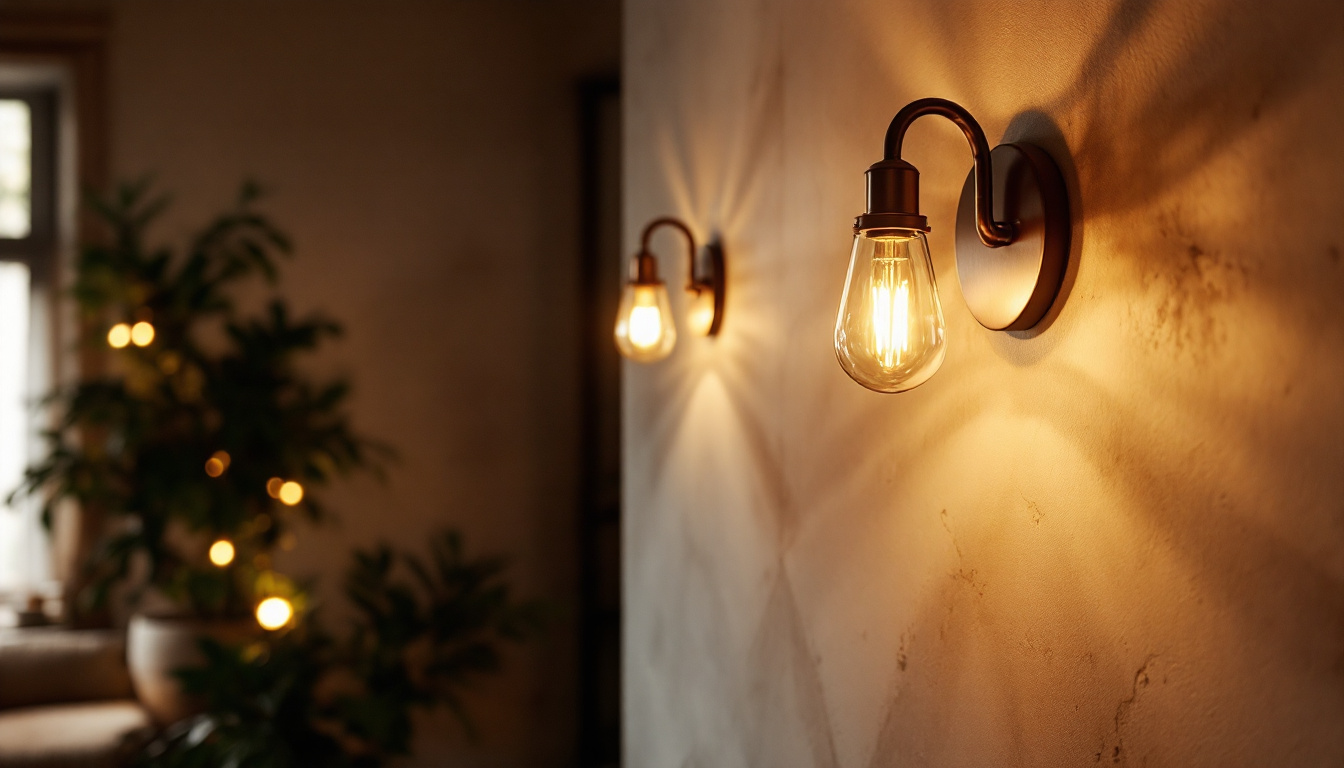

Lighting plays a crucial role in enhancing the aesthetics and functionality of any space. Among the various lighting options available, sconces have emerged as a popular choice for both residential and commercial settings. However, selecting and installing sconces can present unique challenges. This guide aims to provide lighting contractors with insights into avoiding common pitfalls associated with sconce lighting.
Sconces are wall-mounted light fixtures that can serve both decorative and practical purposes. They are versatile and can be used in various settings, from hallways and living rooms to bathrooms and outdoor spaces. Understanding the different types of sconces and their applications is essential for any lighting contractor. The right sconces can transform a space, adding warmth and character while also providing necessary illumination.
In addition to their aesthetic appeal, sconces can also enhance the functionality of a room. For instance, strategically placed sconces can create a layered lighting effect, combining ambient, task, and accent lighting to achieve a well-lit environment. This is particularly important in larger spaces where a single overhead light may not suffice. By utilizing sconces, homeowners can achieve a more dynamic and inviting atmosphere, making it easier to navigate and enjoy their living areas.
There are several types of sconces available, each designed for specific applications. Some of the most common types include:
When selecting sconces, several factors must be considered to ensure they meet the needs of the space:
Another important consideration when choosing sconces is the type of bulb used. LED bulbs are becoming increasingly popular due to their energy efficiency and long lifespan, making them a practical choice for sconces that are frequently used. Additionally, the color temperature of the bulbs can significantly affect the ambiance of a room; warmer tones create a cozy atmosphere, while cooler tones can lend a more modern and crisp feel. By selecting the right bulb in conjunction with the sconce design, homeowners can further customize their lighting experience to suit their preferences and lifestyle.
Even experienced lighting contractors can encounter challenges when installing sconces. Awareness of these common pitfalls can help avoid mistakes that may compromise the overall lighting design.
One of the most significant mistakes is incorrect placement of sconces. Sconces should be installed at a height that maximizes their effectiveness without obstructing views or creating glare. A general rule of thumb is to mount sconces at eye level, typically between 60 to 72 inches from the floor. However, this can vary depending on the specific application and the height of the room.
Additionally, sconces should be spaced appropriately. In hallways, for instance, they should be placed about 6 to 8 feet apart to ensure even illumination. In living areas, consider the layout of the furniture and other light sources to create a harmonious lighting scheme. For instance, if you have a gallery wall, placing sconces at either end can highlight the artwork while providing ambient light that enhances the overall aesthetic of the space. Furthermore, the style and design of the sconces should complement the room’s decor, as mismatched styles can detract from the intended ambiance.
Electrical considerations are paramount when installing sconces. It is crucial to ensure that the existing wiring can support the new fixtures. Inspect the circuit to confirm it can handle the additional load, especially if multiple sconces are being installed on the same circuit.
Moreover, proper grounding and adherence to local electrical codes are essential for safety. Failing to comply with these regulations can lead to electrical hazards, which may result in costly repairs or even pose safety risks to occupants. Additionally, consider the type of bulbs being used; LED bulbs, while energy-efficient, may require specific fixtures or dimmers to function correctly. It’s also wise to think about the color temperature of the bulbs, as this can significantly affect the mood of the room. Warmer tones can create a cozy atmosphere, while cooler tones may lend a more modern or clinical feel. Taking these factors into account will not only ensure a safe installation but also enhance the overall lighting experience in your space.
Beyond functionality, the design of sconces plays a vital role in the overall aesthetic of a space. Lighting contractors should consider various design elements to create a cohesive look. The choice of materials, shapes, and finishes can significantly influence the style of a room, whether it be modern, traditional, or eclectic. For instance, sleek metal sconces with clean lines can enhance a contemporary space, while ornate, vintage-inspired designs can add character to a more classic setting.
The color temperature of the bulbs used in sconces can dramatically affect the ambiance of a room. Warm white bulbs (2700K to 3000K) create a cozy atmosphere, making them suitable for living areas and bedrooms. In contrast, cooler white bulbs (4000K to 5000K) are ideal for task-oriented spaces like kitchens and bathrooms. Understanding the emotional impact of color temperature can help in selecting the right lighting for different activities and times of day, ensuring that each space feels inviting and functional.
Additionally, the type of bulb—whether LED, incandescent, or halogen—can influence energy efficiency and longevity. LED bulbs are increasingly popular due to their low energy consumption and extended lifespan, making them a smart choice for sconces. Furthermore, advancements in LED technology have led to a wider variety of color temperatures and dimmable options, allowing for greater flexibility in creating the desired atmosphere. Choosing the right bulb not only enhances the visual appeal but also contributes to sustainability efforts by reducing energy usage.
Sconces should not be the sole source of lighting in a room. Instead, they should complement other lighting sources, such as overhead fixtures, table lamps, and natural light. A layered lighting approach creates depth and dimension, enhancing the overall aesthetic. This strategy not only improves functionality but also allows for versatility in mood setting, enabling homeowners to transition from bright, energizing light during the day to soft, relaxing illumination in the evening.
When designing a lighting scheme, consider how sconces interact with other fixtures. For example, placing sconces near mirrors can amplify light and create a more spacious feel. Similarly, using sconces to highlight artwork or architectural features can draw attention to focal points in the room. The placement of sconces should also take into account the height at which they are installed; too high can diminish their effect, while too low can create unflattering shadows. Thoughtful positioning, combined with the right brightness and color temperature, can transform a simple wall into a stunning visual narrative that enhances the entire space.
Proper maintenance of sconces is essential to ensure their longevity and performance. Lighting contractors should educate clients on the best practices for keeping sconces in optimal condition.
Dust and grime can accumulate on sconces, diminishing their brightness and overall appearance. Regular cleaning is necessary to maintain their aesthetic appeal. Use a soft, damp cloth to wipe down the fixtures, and avoid harsh chemicals that could damage the finish.
For glass sconces, consider using a glass cleaner to keep them sparkling. Ensure that the bulbs are also cleaned periodically, as dust can affect their brightness and efficiency.
As bulbs begin to dim or flicker, it’s essential to replace them promptly to maintain the desired level of illumination. Educating clients about the signs of a failing bulb can prevent frustration and ensure that sconces continue to function effectively.
When replacing bulbs, it’s important to use the correct wattage and type to avoid damaging the fixture or creating safety hazards. Providing clients with a list of recommended bulbs can streamline this process.
Sconce lighting offers a unique blend of functionality and aesthetics, making it a valuable addition to any space. However, the installation and selection process can be fraught with challenges. By understanding the various types of sconces, avoiding common pitfalls, and considering design elements, lighting contractors can deliver exceptional results for their clients.
Incorporating proper maintenance practices further ensures that sconces remain a beautiful and effective lighting option for years to come. By staying informed and attentive to detail, lighting contractors can elevate their projects and enhance the overall experience for their clients.
Ready to enhance your lighting projects with the perfect sconces? At LumenWholesale, we provide lighting contractors with an exceptional range of high-quality, spec-grade lighting solutions at unbeatable wholesale prices. Say goodbye to inflated markups and hello to a vast selection of reliable, high-performance lighting that meets the highest industry standards. Plus, with free shipping on bulk orders, you can secure premium lighting at the best value — without any hidden fees. Elevate your lighting game and experience the ideal combination of quality, affordability, and convenience. Visit LumenWholesale today for Wholesale Lighting at the Best Value.

Discover essential insights into controls and electrical supplies tailored for lighting contractors.

Discover the frequent pitfalls lighting contractors face when working with metal halide fixtures.

Discover the essential insights and strategies for lighting contractors in “Wire Pullers: The Points for Lighting Contractors.” This article delves into the latest industry trends, innovative techniques, and practical tips to enhance your projects and boost client satisfaction.

Discover the essential insights lighting contractors need to know about wall sconces, from design trends to installation tips, ensuring your projects shine with both style and functionality..
Get notified when NEW deals are released.
Optimize your budget with wholesale discounts.
Only top-quality, specification-grade lighting products.
No additional costs at checkout - what you see is what you pay.
We understand the unique needs of contractors.